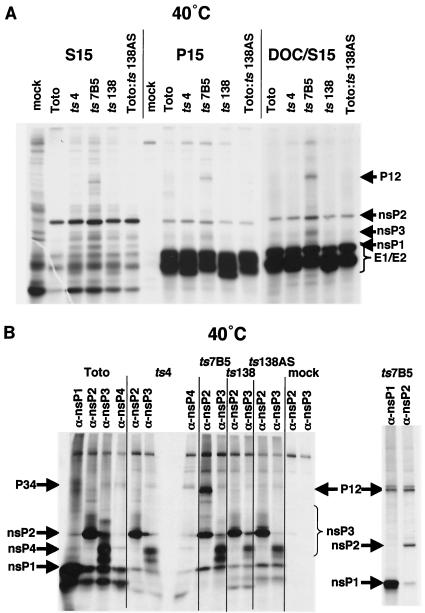FIG. 4.
nsP3 mutants form replication complexes that associate with P15 membranes and are released with detergent treatment. CEF cells were infected at 30°C, shifted to 40°C between 1.5 and 2 h p.i., and labeled with [35S]methionine as described in Materials and Methods. (A) Lysates from cultures shifted to 40°C. The 15,000 × g pellet (P15) and supernatant (S15) fractions were obtained and analyzed directly on 5 to 10% Laemmli polyacrylamide gels. The P15 fraction was resuspended in 100 mM NaCl-1% DOC, vortexed, and repelleted at 15,000 × g to obtained the detergent-washed pellet fraction (DOC-P15) and the detergent supernatant (DOC-S15). (B) Immunoprecipitation of 40°C nsP3 mutant DOC-S15 fractions. The DOC-S15 fractions, obtained from each infected-cell P15 fraction as described above, were incubated with antibodies specific for each of the viral nsPs, as indicated. Immunoprecipitates were collected and analyzed on 5 to 10% Laemmli polyacrylamide gels. Right panel: DOC-S15 fractions were denatured in 1% SDS at 100°C before immunoprecipitation.

